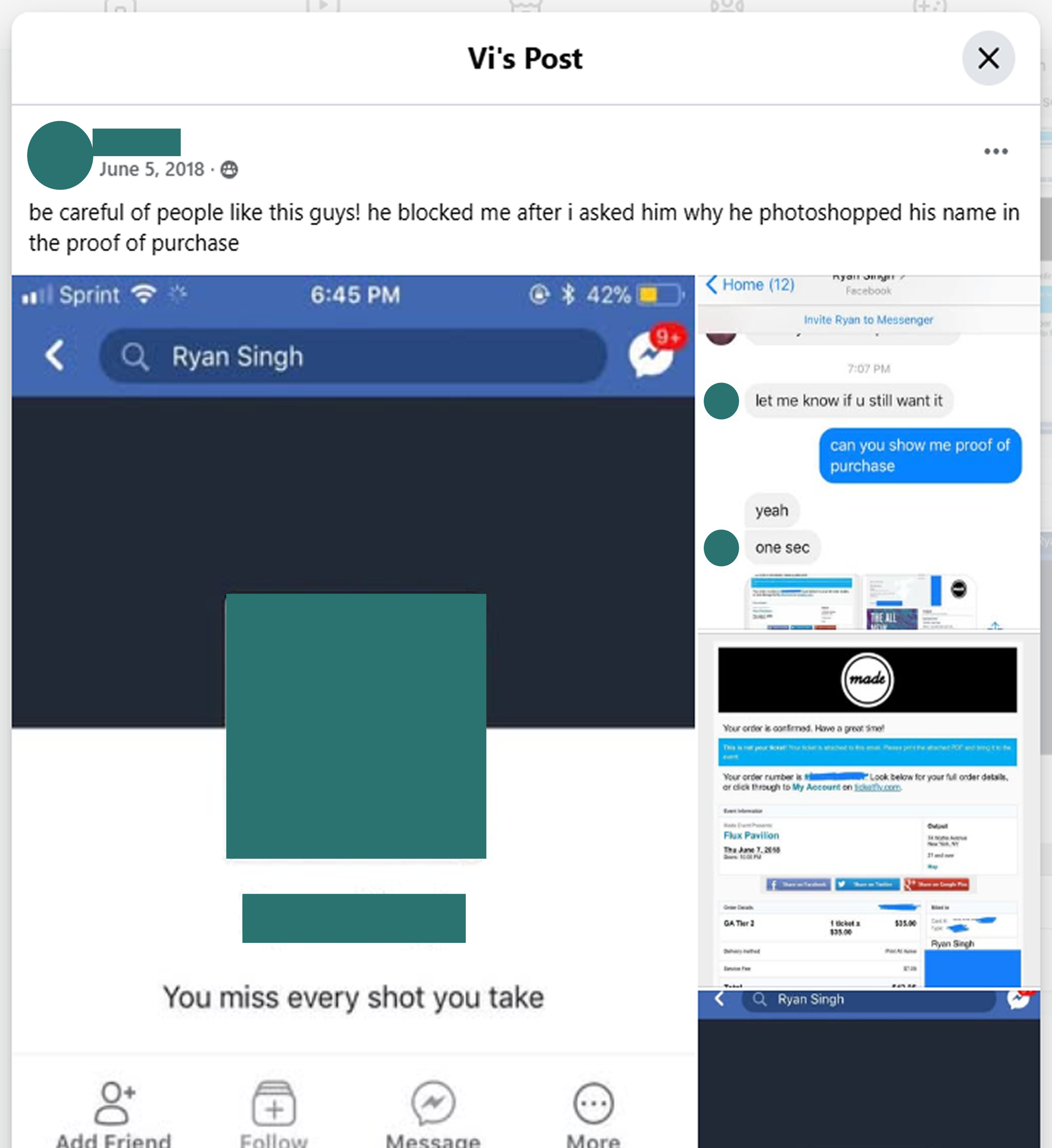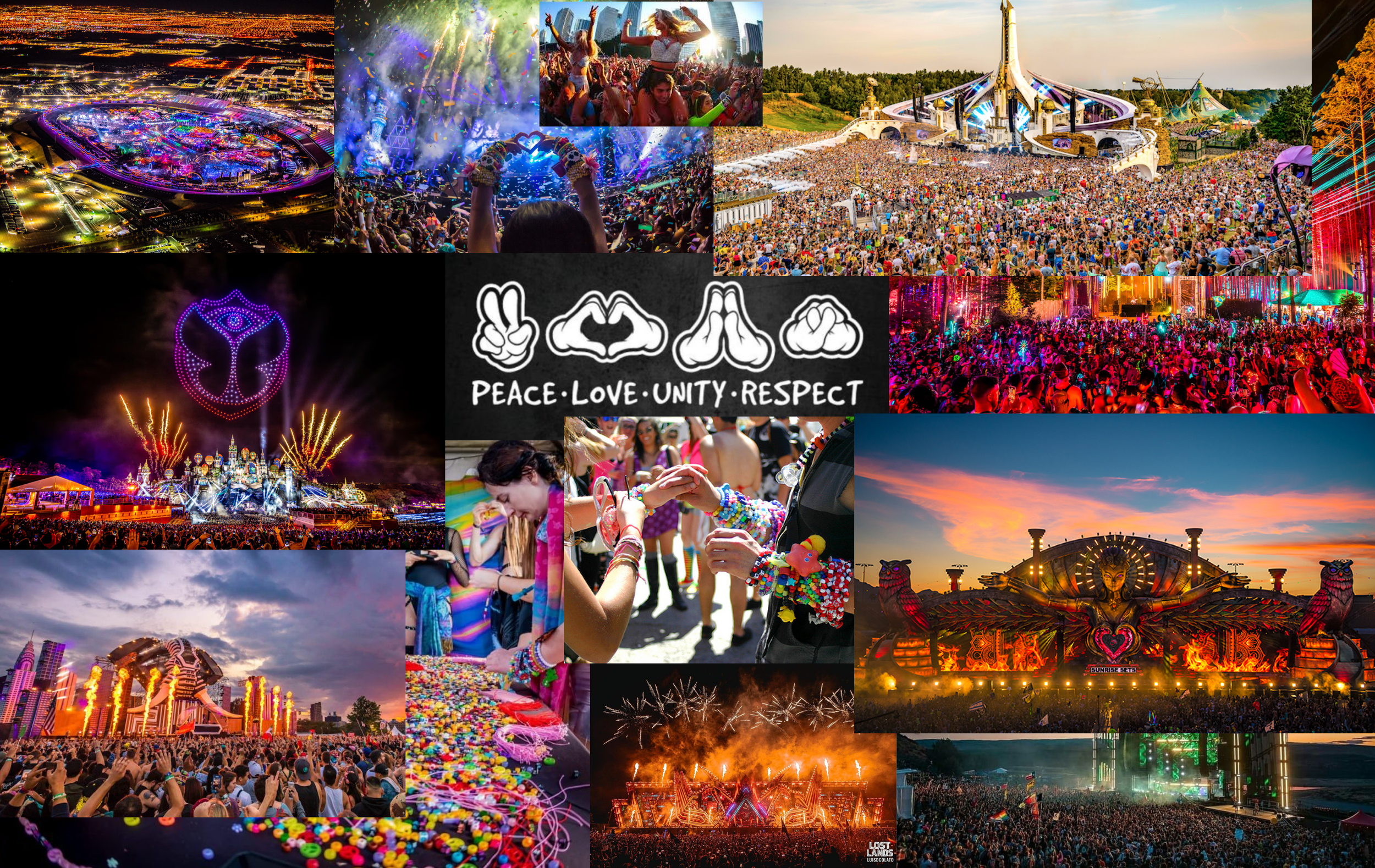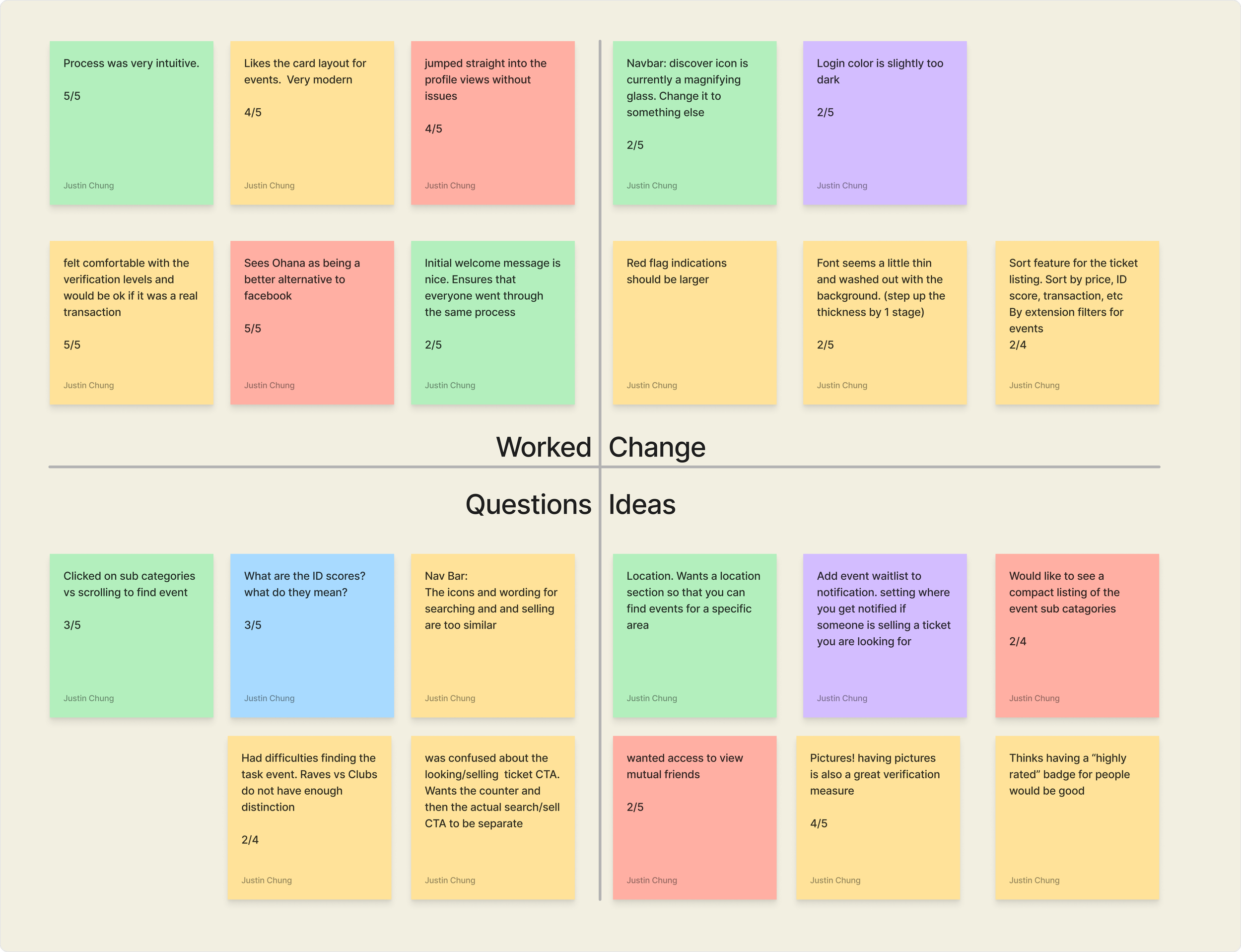Mobile App Design
OHANA
At a Glance
| Case Study
Solo Project
Ohana is a mobile app design created to help EDM (Electronic Dance Music) event goers have a platform to sell and buy tickets in a safe maner. I have friends who frequently attend these events and my motivation was to create a product that would help them out. I wanted to give my friends the luxury to buy and sell tickets conidently without a second thought.
The Problem
| My Role
UX/UI Designer, research, branding, wireframing,
prototyping, user testing
Payment Processors
Participants indicated that the other party using a well known payment processor was critical in going through with the transaction
| Timeline
4-6 Weeks
| Tools
Figma and Figjam
Informal Channels Dominate Ticket Resale, Despite Trust Concerns
Currently, there is no platform built specifically for safe ticket exchanges between users. When my friends look for tickets, they usually turn to group chats or Facebook groups. These methods work due to the size of the communities, but eventually, you’ll see posts asking for a “legit check” — or worse, warnings like “Don’t trust this person, I got scammed.” While ticketing platforms like Ticketmaster and AXS offer official resale features, they often come with added markups and fees due to their business model.
The Solution
Give the People What They Want
OHANA. A mobile app that enables peer-to-peer EDM (Electronic Dance Music) event ticket transfers. The product is user-driven, promoting safe transactions through identity verification and transparent transaction history.
Safe Doesnt Need to be Slow
OHANA provides multiple ticket listings with critical information at your fingertips. We do the verification so the users can get to the fun.
Interview Insights
Even out the Playing Field
OHANA provides multiple ticket listings with critical information at your fingertips. We do the verification so the users can get to the fun.
3 Themes Were Consistently Brought Up By Our Participants
Identity Verification
Participants found that being able to verify whether the other user was genuine and trustworthy was a primary concern
To address these concerns, OHANA will need a robust profile system that will provide transaction history and multiple levels of identity verifications
Trust, but Verify
OHANA provides multiple ticket listings with critical information at your fingertips. We do the verification so the users can get to the fun.
OHANA will need a payment system that will provide financial security to it’s user base. Biometric payments already linked to a user’s mobile device would be ideal
Proof of Purchase
While the participants i interviewed knew to ask for proof of purchase, there was no set rule that it had to be provided
In order for a user to post a ticket for sale, proof of purchase is a required document
How might we reimagine peer-to-peer ticket exchanges to build trust and accountability, enabling secure, scam-free transactions?
User Flows
1: Ticket Search
2: Verification Loop
3: Ticket Purchase
So, is there an afterparty?
What I learned
1: Expand the interview pool
Looking back, i would have included more users who were unfamiliar with 3rd party ticket purchasing. Their input could have improved my information architechture and be helpful for market expanstion to new users who are new to the scene.
2: Feel free to experiment
A habit I am learning to break is sticking to a concept when I am content with it, instead of exploring more possibilities. Throughout this project, I had to remind myself that coming up with bad designs is part of the process and putting ideas out there is what’s important.
Next Steps
1: Explore the social media side
The main inspiration for my project is the community that ravers foster. While the events are flashy, it’s the interpersonal connections that keep ravers going back for more. The obvious next step for this project is to expand OHANA on the social media side in order to help connect and foster a community
Inspiration
When I think of raves, I’m reminded of 3 day music festivals. Especially EDC Las Vegas, which feels like the mecca of EDM events. Starting at 5pm and ending at 5am, it’s a surreal experience living life in reverse. Entering at sunset and dancing until sunrise with half a million like-minded people is something you need to experience to understand. That’s why my mood board is inspired by the bright, cheerful, and energetic colors, framed by the hues of sunset and sunrise. Although they are opposites, these events complement each other beautifully.
Branding
Final Designs
Prototyping
User Testing
After creating my high fidelity wireframes and applying my design kit, I proceed with the user testing phase. The test was broken out into # of distinct tasks:
Log in and find someone selling a “Flosstradamus” Nightclub event ticket;
Locate the main profile of the trusted seller;
Get in touch with them and purchase their ticket.
Iterations
Based on the results from the testing, the following iterations were made:
The profile quick view, accessible from the ticket listing screen, was a key screen in the design. Critical design updates included in the first iteration include verification features like a direct “proof of purchase” button and a purple ring around the profile photo to indicate passport verification by the other party. This version was used for the first round of user testing. Based on feedback, visual updates were made for clarity- text added below the profile photo and a tutorial modal was introduced to explain the verification ring. The “red flag” warning was enlarged for visibility, but only appears when a user has a report, to avoid unnecessary negative signaling.
60% of the users stated that having an explanation of the ID score would help them decide which sellers they would rank higher as trustworthy.
Final Prototype
40% of users had trouble finding the event through my designed scrolling method. To address that, I included a working category divider to streamline the search. In addition, there is a filter option where you can sort chronologically.
Reflection
I really enjoyed working on this project, especially because it’s rooted in a community I’m personally connected to. Many of my friends attend EDM events, and I'm part of the same circles, so it was fascinating to observe the different ways people verify others before making a transaction. When designing the user flow for this project, it felt like I was creating something to personally help my friends.
The goal of OHANA was to create a peer-to-peer ticket exchange where all the verification tools—identity checks, transaction history, and proof of purchase—exist in one place. I wanted users to feel confident enough to hit the "purchase" button without hesitation. Based on the feedback I received during testing, I believe that goal was successfully met.
Looking back, I would have included more users who are not too involved with third-party ticket purchasing. In the interview phase, this would have provided good data as to what unfamiliar users would look for in these transactions and could provide a deeper understanding of the information architecture. The same reasoning applies to the user testing phase. If I am aiming for market expansion, new users are inevitable, and being able to design around their results would be invaluable.
Moving forward, I’d love to evolve OHANA into something more social—an app that not only facilitates safe exchanges but also helps users connect at events themselves.






















